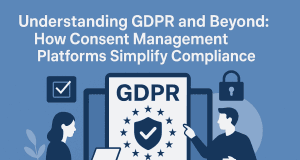In an era where data privacy concerns are at the forefront of consumer consciousness, developing a privacy-first marketing strategy isn’t just a trend—it’s a necessity. With increasing regulations like GDPR, CCPA, and others, companies must take proactive steps to build trust with consumers while still achieving their marketing objectives. This article explores best practices and insights for creating a privacy-first marketing strategy.
Understanding the Need for Privacy-First Marketing
The Landscape of Data Privacy
The digital economy thrives on data, but consumer awareness has led to a demand for transparency and control over personal information. As customers become more skeptical of how their data is used, brands need to prioritize ethical data practices.
Regulatory Compliance
Regulatory frameworks require businesses to implement stringent data protection measures. Non-compliance can lead to hefty fines and damage to reputation. A privacy-first approach not only ensures compliance but also builds consumer trust.
Building Consumer Trust
Privacy-first marketing demonstrates to customers that their rights are valued. By being transparent about data usage and providing choices, brands can cultivate deeper relationships with their audience.
Best Practices for a Privacy-First Marketing Strategy
1. Transparency is Key
Being open about your data practices sets the foundation for trust. Include clear language in your privacy policy, detailing:
- What data is collected
- How it’s used
- Who it’s shared with
- How users can manage their data
2. Obtain Informed Consent
Always obtain explicit consent before collecting personal information. Use opt-in methods rather than opt-out, ensuring that users have a clear choice. Additionally, simplify the consent process so users can make informed decisions easily.
3. Limit Data Collection
Adopt a minimum data principle, only collecting the information necessary for your marketing efforts. This not only minimizes risk but also aligns with the expectations of privacy-conscious consumers.
4. Implement Robust Security Measures
Protecting consumer data should be a priority. Employ encryption, secure servers, and regular audits to safeguard personal information. Communicate these measures to your consumers, reiterating your commitment to their privacy.
5. Regularly Update Privacy Policies
As regulations evolve, so should your privacy policies. Ensure that these documents are easily accessible and reflect current practices. Regular updates keep consumers informed and demonstrate your ongoing commitment to privacy.
6. Leverage Privacy-Friendly Technologies
Consider adopting tools and platforms that prioritize user privacy. Many alternatives to traditional marketing technologies focus on ethical data use, giving consumers more control over their information.
7. Data Minimization in Targeting and Personalization
While personalization enhances user experience, it should not come at the expense of privacy. Use anonymized data for insights and segment users broadly to minimize personal data exposure while still delivering relevant content.
8. Educate Your Audience
Engage consumers by providing resources that explain data privacy issues and how your brand protects their information. Educational content can empower consumers, helping them feel confident in their interactions with your brand.
9. Feedback Mechanisms
Create channels for consumers to voice their concerns or inquire about data practices. This not only addresses issues promptly but also fosters a culture of openness.
10. Monitor and Evaluate
Regularly assess your marketing strategies for compliance and effectiveness. Use feedback from consumers to make continuous improvements, adapting to the evolving privacy landscape.
Insights from Industry Leaders
Case Studies and Success Stories
Several companies have successfully integrated privacy-first strategies:
- Apple: Recognized for its strong stance on privacy, Apple provides users with clear options for data management, influencing consumer trust significantly.
- Mozilla: By prioritizing user privacy in its browser, Mozilla has managed to attract users who value safety and transparency over targeted ads.
The Future of Privacy-First Marketing
As privacy regulations become stricter and consumer awareness continues to rise, a privacy-first approach will likely shift from a competitive advantage to a fundamental expectation. Brands that embrace this transition will not only minimize legal risks but also foster loyalty and trust among their consumers.
Conclusion
Building a privacy-first marketing strategy is not just about compliance; it’s an opportunity to establish meaningful connections with your audience. By prioritizing transparency, consent, and security, brands can navigate the complex landscape of data privacy while continuing to drive effective marketing outcomes. Embracing a privacy-first mindset is a win-win, enhancing both consumer trust and brand reputation.









